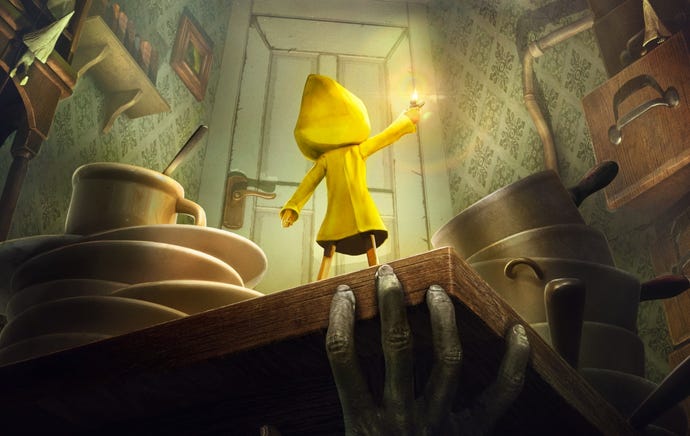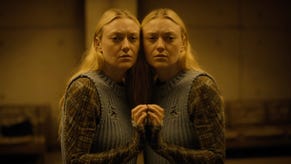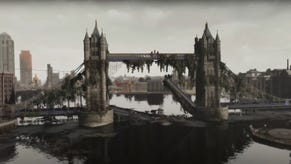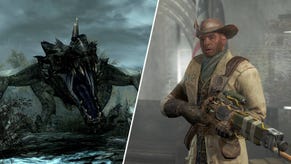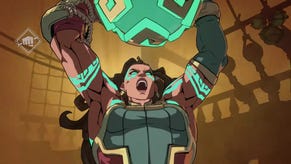Subtle, spooky and full of sausages - Little Nightmares is the creepiest game we've played all year
Welcome to a weird world of horror. Hope you're not hungry.
"It felt like a really nice thing to create nightmares and drop this kid in the middle of them. It's really nice to not just make pure horror and not just make a pure, twee platformer" - Dave Merkiv, Tarsier Studios
It's taken me a while to get around to actually write about it, but Little Nightmares was one of the most interesting games I saw last month at Gamescom. Last week at EGX I got to toy with it again and had it further confirmed to me - this is a unique little puzzle platformer that appears to have future indie darling written all over it.
The game is coming from Tarsier Studios, a developer with a history of providing a helping hand on some fairly big names but no original credits to speak of to their name. Little Nightmares caught the attention of Namco Bandai, and they're now publishing the title. It seems a smart move for both - Little Nightmares seems to deserve the sort of promotional push a big company like Namco can offer, while a little project like this has heart in a different way to a behemoth like Souls or Tekken. It makes sense.
"We founded the studio back in 2004 as a team of students," Tarsier co-founder and business developer Anndreas Johnsson explains. "We worked on a game that was called The City of Metronome. It was very much... if you look at Little Nightmares, it's almost like a spiritual successor."
The lineage can be seen. City of Metronome never made it out in the end, but the excellent beta archiving site Unseen 64 has some footage and images. It's clearly a very different type of game, but the visual similarity to Little Nightmares' macabre fairytale look are clear.
"Little Nightmares, for me at least, and most of the co-founders... it takes us back to when we founded the company, which is amazing. It makes us very nervous as well! But super excited," Johnsson laughs.
This is a common thread throughout my brief time with the game. It's a passion project that has a long lineage. Johnsson guides me through the history of the studio, explaining that Tarsier's time as an exclusive partner of Sony saw them work on PSN download Rag Doll Kung Fu for PS3 and then as DLC support for all three LittleBigPlanet releases. The studio also did the heavy lifting on the Vita entry in that series.
"The projects we've had with Sony... like, I'm not sure if you've seen the DC Comics DLC pack for LittleBigPlanet 2 - we did that. There's amazing, cool stuff that we've done with external IPs being bought into the LittleBigPlanet games... we've had a lot of creative freedom within the franchise. Of course that's not full freedom, but we've still had a lot to say. We've learned so much from working on these titles. Going back... I wouldn't change how we've done this. We've learned so much now, and now we can make the game that we wanted to."
Little Nightmares is that game. The quickest comparison I draw is to Limbo, in a sense. There's that sort of plodding, methodical movement, but then there's Z-axis movement within its environment, too. Some of the demo is spent sneaking past deadly-looking enemies. Some is spent soaking up the dread-filled atmosphere. Some is given over to platforming and physics-based puzzles. It's all fun.
A general sense of dread and tension mingles with physics puzzles, the threat of some of the creatures that inhabit the nightmares creating a sense of urgency around them. It might not even be a real needed urgency - I don't stick around to find out if taking too long results in death - but it works either way.
"A general sense of dread and tension mingles with physics puzzles, the threat of some of the creatures that inhabit the nightmares creating a sense of urgency around them."
You play as a little kid who in the segment I sample is mute. It's a game that offers up its deliberately scant narrative through world design, something that senior narrative director Dave Merkiv later tells me was always a huge part of the game's design.
"With this project it's not about, y'know, expository cutscenes," he says. "People don't talk to each other and give you all those nice helpful hints about what's going on, so I think it's been really interesting for me since it's been about creating a world where the story just kind of exists. It just is.
"We're trying to give people enough so they get that, so they see things and begin to piece things together themselves. As a gamer myself, I love that - when a designer has that confidence in what they're doing to trust you to get it rather than saying 'now this is how you should feel,' y'know what I mean? It's been really cool in that way."
Everything is intuitive, too. So many press demos involve somebody hovering over your shoulder in case you get stuck, but this demo is delivered in a more relaxed fashion. I tool around the first room for too long just dragging shoes and other items around, but before long I'm making sausages that I then use to swing across gaps and evading detection by the oversized creepy cook.
I'm drawn quickly into it. Its camera, which is always positioned far enough back to be eerily detached, does a great deal to add to the sense of dead, especially when my character falls into a huge pile of old shoes and begins sinking into them. It's creepy. It works.
To strip Little Nightmares down to 'it's a horror puzzle platformer' feels reductive, but if I say that you'll get a decent idea of Little Nightmares' sense of style. The game has superficial similarities to many similar games, but it's also clearly its own thing.
"We're trying to give people enough so they see things and begin to piece things together themselves. As a gamer myself, I love that - when a designer has that confidence in what they're doing to trust you to get it rather than saying 'now this is how you should feel'" - Dave Merkiv
"Not specifically," Merkiv offers when asked if the game has specific inspirations. "I mean, everyone on the team has got their own, that's the thing. If you ask anyone, everyone has got so many things they're into that naturally come out in the work that they do. We never kind of said let's go out and remake this film or this piece of artwork or whatever, but every artist has got people that they really respect. You'd never want to copy that though, because then it's not your own art, you know? Then it's someone else's.
"Whoever you ask, people see different things, and we've found that really cool. You hear all these people saying 'you've clearly been inspired by this!' and we're like... No?! But that's coming out anyway, which in a way is flattering."
Indeed, the biggest inspiration for the game seems to be the canceled and unfinished City of Metronome. Over a decade after that project was announced Tarsier has a chance to return to its concepts, with the end result a game that, based on the old footage of the cancelled project, is much more immediately compelling.
"It's been with us since the company began, really," Merkiv says. "There's elements of everything we've learned since then going into it. It felt like a really nice thing to just create nightmares and drop this kid in the middle of them. It's really nice to not just make pure horror and not just make a pure, twee platformer. We really liked the idea of putting these two things together and seeing how it felt."
"For me, it felt like it all kind of came together very naturally," Johnsson adds, echoing Merkiv's thoughts. "We had a small prototype team prototyping something very specific - like the doll house camera, for example. That kind of feeling of looking into a room and exploring a room... that kind of naturally fit together with some other ideas that had been sort of floating around in the office.
"When everything got drawn together, we realized that, yeah -- this isn't City of Metronome, but when you step back... you can definitely see the trace, the breadcrumbs that lead from that project to this one. It just naturally happened. I think that's because of the legacy that we have. Most of the co-founders are still at the company, that we've grown organically in that way... it's in our blood, somehow."
Little Nightmares is out Spring 2017 on PC, Xbox One and PS4.
